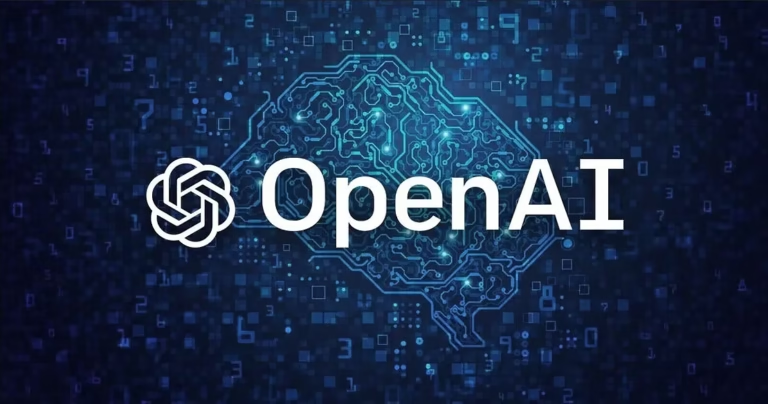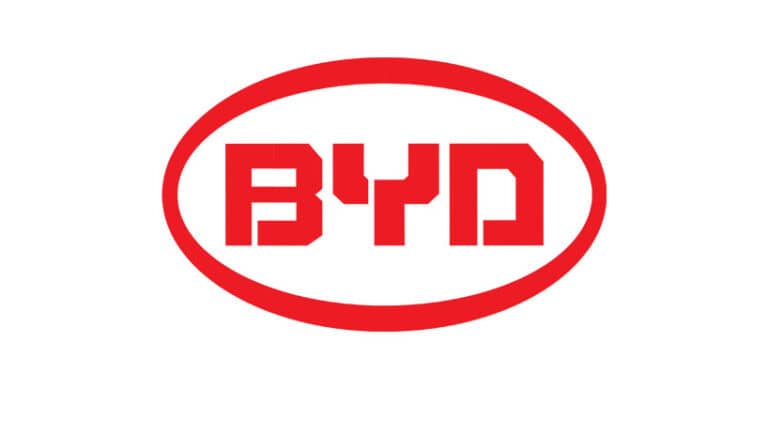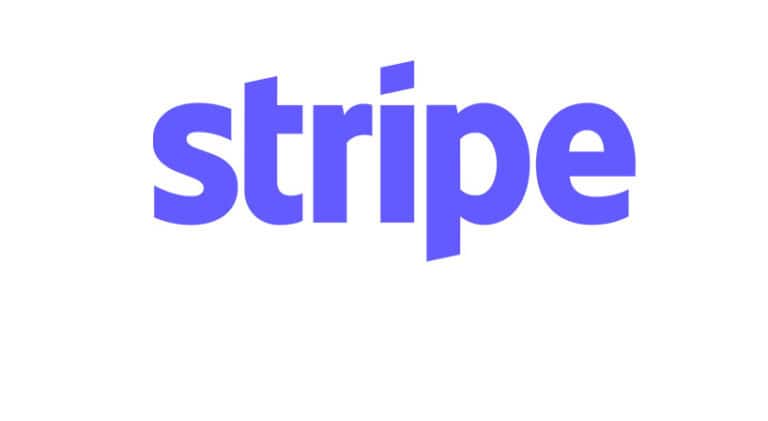1. Introduction
If you’re a software engineer or ML enthusiast, chances are you’ve dreamed of working at OpenAI. Known for groundbreaking innovations like ChatGPT, GPT-4, and DALL-E, OpenAI is at the forefront of artificial intelligence research. But let’s be real, landing a job here isn’t a walk in the park. OpenAI’s interview process is notoriously rigorous, designed to identify the best of the best in machine learning, coding, and research. That’s why preparing for ace your OpenAI ML interview questions is essential for success.
That’s where we come in. At InterviewNode, we specialize in helping software engineers like you prepare for ML interviews at top companies, including OpenAI. In this blog, we’ll break down the top 25 frequently asked questions in OpenAI ML interviews and provide detailed answers to help you ace your interview.
Whether you’re a seasoned ML engineer or just starting your journey, this guide will give you the tools and confidence to tackle OpenAI’s interview process head-on. Let’s dive in!
2. Overview of OpenAI’s Interview Process
Before we get to the questions, it’s important to understand what you’re up against. OpenAI’s interview process is multi-stage and designed to test not just your technical skills but also your creativity, problem-solving ability, and alignment with their mission. Here’s a breakdown of what to expect:
Stages of the Interview Process
Initial Screening
Your resume and projects will be reviewed to assess your experience and expertise in ML, coding, and research.
Tip: Highlight projects that demonstrate your ability to solve real-world problems using ML.
Technical Phone Screen
A 45–60 minute call with an OpenAI engineer.
You’ll be asked coding questions and basic ML concepts to gauge your foundational knowledge.
Coding and ML Problem-Solving Rounds
These are in-depth technical interviews where you’ll solve coding problems and ML-related challenges.
Expect questions on algorithms, data structures, and implementing ML models from scratch.
System Design and Research-Focused Rounds
You’ll be tested on your ability to design scalable ML systems and discuss recent research papers.
OpenAI values candidates who can think critically about applying ML to real-world problems.
Behavioral and Culture-Fit Interviews
These rounds assess your teamwork, communication skills, and alignment with OpenAI’s mission of ensuring AI benefits all of humanity.
What OpenAI Looks For in Candidates
Strong Fundamentals: A deep understanding of ML, deep learning, and coding is non-negotiable.
Research-Oriented Mindset: OpenAI values candidates who are curious, innovative, and up-to-date with the latest advancements in AI.
Problem-Solving and Creativity: You’ll need to think on your feet and come up with creative solutions to complex problems.
Mission Alignment: OpenAI is passionate about using AI for the greater good. Show that you share this vision.
Now that you know what to expect, let’s get to the heart of the matter—the top 25 frequently asked questions in OpenAI ML interviews.
3. Top 25 Frequently Asked Questions in OpenAI ML Interviews
To make this guide as practical as possible, we’ve categorized the questions into five sections:
Foundational ML Concepts
Deep Learning
Coding and Algorithms
Research and Applied ML
Behavioral and Mission Alignment
Let’s tackle each section one by one, starting with foundational ML concepts.
Section 1: Foundational ML Concepts
These questions test your understanding of the basics of machine learning. OpenAI expects you to have a rock-solid grasp of these concepts.
Question 1: What is the difference between supervised and unsupervised learning?
Answer:Supervised learning involves training a model on labeled data, where the input features are mapped to known output labels. The goal is to learn a mapping function that can predict the output for new inputs. Examples include regression and classification tasks.
Unsupervised learning, on the other hand, deals with unlabeled data. The model tries to find hidden patterns or structures in the data. Clustering and dimensionality reduction are common unsupervised learning techniques.
Example:
Supervised: Predicting house prices based on features like size and location.
Unsupervised: Grouping customers into segments based on purchasing behavior.
Pro Tip: Be ready to explain how you’d choose between supervised and unsupervised learning for a given problem.
Question 2: What is overfitting, and how can you prevent it?
Answer:Overfitting occurs when a model learns the training data too well, capturing noise and outliers instead of the underlying pattern. This leads to poor performance on unseen data.
Ways to Prevent Overfitting:
Cross-Validation: Use techniques like k-fold cross-validation to evaluate your model’s performance on multiple subsets of the data.
Regularization: Add a penalty term to the loss function (e.g., L1 or L2 regularization) to discourage complex models.
Simplify the Model: Use fewer features or a less complex architecture.
Early Stopping: Stop training when the validation error starts to increase.
Example:If you’re training a neural network and notice that the training accuracy is 99% but the validation accuracy is 70%, your model is likely overfitting.
Question 3: Explain the bias-variance tradeoff.
Answer:The bias-variance tradeoff is a fundamental concept in ML that deals with the tradeoff between two sources of error:
Bias: Error due to overly simplistic assumptions in the learning algorithm. High bias can cause underfitting.
Variance: Error due to the model’s sensitivity to small fluctuations in the training set. High variance can cause overfitting.
Key Points:
A high-bias model is too simple and fails to capture the underlying trend (e.g., linear regression for a nonlinear problem).
A high-variance model is too complex and captures noise (e.g., a deep neural network with too many layers).
The goal is to find the right balance that minimizes total error.
Pro Tip: Use visualization (e.g., learning curves) to explain this concept during your interview.
Question 4: What is cross-validation, and why is it important?
Answer:Cross-validation is a technique used to evaluate the performance of a model on unseen data. The most common method is k-fold cross-validation, where the dataset is split into k subsets. The model is trained on k-1 subsets and validated on the remaining subset. This process is repeated k times, and the results are averaged.
Why It’s Important:
It provides a more reliable estimate of model performance than a single train-test split.
It helps detect overfitting by testing the model on multiple subsets of the data.
Example:If you’re building a model to predict customer churn, using 5-fold cross-validation ensures that your model’s performance is consistent across different subsets of the data.
Question 5: What is the difference between classification and regression?
Answer:Classification and regression are both supervised learning tasks, but they differ in the type of output they predict:
Classification: Predicts discrete class labels (e.g., spam vs. not spam).
Regression: Predicts continuous values (e.g., house prices).
Example:
Classification: Predicting whether an email is spam (binary classification) or identifying the type of fruit in an image (multi-class classification).
Regression: Predicting the temperature for the next day or estimating the age of a person based on their photo.
Pro Tip: Be prepared to explain how you’d approach a problem that could be framed as either classification or regression.
Section 2: Deep Learning
OpenAI is at the cutting edge of deep learning research, so expect questions that test your understanding of both foundational concepts and advanced techniques. Let’s dive into the top 5 questions in this category.
Question 6: What is a neural network, and how does it work?
Answer:A neural network is a computational model inspired by the human brain. It consists of layers of interconnected nodes (or neurons) that process input data to produce an output. Here’s how it works:
Input Layer: Receives the input data (e.g., pixel values of an image).
Hidden Layers: Perform transformations on the input data using weights and activation functions.
Output Layer: Produces the final prediction (e.g., class probabilities in classification tasks).
Key Concepts:
Weights: Parameters that the model learns during training.
Activation Functions: Introduce non-linearity into the model (e.g., ReLU, sigmoid).
Loss Function: Measures the difference between the predicted and actual output.
Backpropagation: The process of updating weights to minimize the loss.
Example:If you’re building a neural network to classify handwritten digits (0–9), the input layer would receive the pixel values, the hidden layers would extract features like edges and curves, and the output layer would produce probabilities for each digit.
Pro Tip: Be ready to draw a simple neural network diagram during your interview to explain this concept visually.
Question 7: Explain backpropagation in detail.
Answer:Backpropagation is the algorithm used to train neural networks by minimizing the loss function. Here’s how it works step-by-step:
Forward Pass: Compute the output of the network for a given input.
Calculate Loss: Compare the predicted output with the actual output using a loss function (e.g., mean squared error for regression, cross-entropy for classification).
Backward Pass: Compute the gradient of the loss with respect to each weight in the network using the chain rule of calculus.
Update Weights: Adjust the weights in the opposite direction of the gradient to minimize the loss (using optimization algorithms like gradient descent).
Why It’s Important:
Backpropagation allows neural networks to learn from data by iteratively improving their predictions.
Example:If your neural network misclassifies an image of a cat as a dog, backpropagation will adjust the weights to reduce the likelihood of this error in the future.
Pro Tip: Practice explaining backpropagation with a simple example, like a single-layer network.
Question 8: What are convolutional neural networks (CNNs), and how are they different from traditional neural networks?
Answer:Convolutional Neural Networks (CNNs) are a type of neural network designed for processing grid-like data, such as images. Here’s what makes them unique:
Convolutional Layers: Use filters (or kernels) to extract spatial features like edges, textures, and patterns.
Pooling Layers: Reduce the spatial dimensions of the feature maps (e.g., max pooling).
Fully Connected Layers: Combine the extracted features to make predictions.
Key Differences from Traditional Neural Networks:
CNNs are translation-invariant, meaning they can recognize patterns regardless of their position in the input.
They are more efficient for image data due to parameter sharing and sparse connectivity.
Example:If you’re building a CNN to classify images of cats and dogs, the convolutional layers will detect features like ears and tails, while the fully connected layers will use these features to make the final prediction.
Pro Tip: Be ready to explain how CNNs handle overfitting (e.g., using dropout or data augmentation).
Question 9: What are recurrent neural networks (RNNs), and what are their limitations?
Answer:Recurrent Neural Networks (RNNs) are designed for sequential data, such as time series or text. Unlike traditional neural networks, RNNs have a memory mechanism that allows them to retain information from previous time steps.
How They Work:
At each time step, the RNN takes an input and combines it with the hidden state from the previous time step.
This allows the network to capture temporal dependencies in the data.
Limitations:
Vanishing Gradient Problem: Gradients can become very small during backpropagation, making it difficult for the network to learn long-term dependencies.
Exploding Gradient Problem: Gradients can become very large, causing unstable training.
Computationally Expensive: RNNs are slower to train compared to other architectures.
Example:If you’re building an RNN to predict the next word in a sentence, the network will use information from previous words to make its prediction.
Pro Tip: Mention how advanced architectures like LSTMs and GRUs address these limitations.
Question 10: What are transformers, and why are they important?
Answer:Transformers are a type of neural network architecture that has revolutionized natural language processing (NLP). They were introduced in the paper "Attention is All You Need" and are the foundation of models like GPT and BERT.
Key Features:
Self-Attention Mechanism: Allows the model to focus on different parts of the input sequence when making predictions.
Parallelization: Unlike RNNs, transformers process the entire sequence at once, making them faster to train.
Scalability: Transformers can handle large datasets and complex tasks, such as language translation and text generation.
Why They’re Important:
Transformers have achieved state-of-the-art results on a wide range of NLP tasks.
They are the backbone of OpenAI’s GPT models, which power applications like ChatGPT.
Example:If you’re using a transformer to translate English to French, the self-attention mechanism will help the model focus on the most relevant words in the input sentence.
Pro Tip: Be ready to discuss how transformers differ from RNNs and why they are better suited for certain tasks.
Section 3: Coding and Algorithms
OpenAI’s coding questions are designed to test your problem-solving skills, efficiency, and ability to write clean, optimized code. Let’s dive into the top 5 questions in this category.
Question 11: Write a Python function to reverse a string.
Answer:Reversing a string is a classic coding question that tests your understanding of basic Python operations. Here’s a simple solution:

Explanation:
s[::-1] is Python’s slicing syntax, which reverses the string.
This solution is concise and efficient, with a time complexity of O(n), where n is the length of the string.
Example:

Pro Tip: Be ready to explain alternative methods, such as using a loop or the reversed() function.
Question 12: How do you find the largest element in a list?
Answer:Finding the largest element in a list is a common problem that tests your knowledge of Python’s built-in functions and algorithms. Here’s how you can do it:

Explanation:
The max() function returns the largest element in the list.
This solution is simple and efficient, with a time complexity of O(n).
Alternative Approach:If you’re asked to implement this without using built-in functions, you can use a loop:

Pro Tip: Always discuss the time and space complexity of your solution.
Question 13: Write a function to check if a string is a palindrome.
Answer:A palindrome is a string that reads the same backward as forward (e.g., "madam"). Here’s how you can check for it:

Explanation:
The function compares the string to its reverse.
The time complexity is O(n), where n is the length of the string.
Example:

Pro Tip: Be ready to handle edge cases, such as strings with spaces or special characters.
Question 14: How do you implement a binary search algorithm?
Answer:Binary search is an efficient algorithm for finding an item in a sorted list. Here’s how you can implement it in Python:

Explanation:
The algorithm repeatedly divides the list in half, reducing the search space by half each time.
The time complexity is O(log n), making it much faster than a linear search for large datasets.
Example:

Pro Tip: Be ready to explain why binary search only works on sorted lists.
Question 15: How do you remove duplicates from a list?
Answer:Removing duplicates from a list is a common task that tests your knowledge of Python data structures. Here’s a simple solution using sets:

Explanation:
Sets automatically remove duplicates because they only store unique elements.
The time complexity is O(n), where n is the length of the list.
Alternative Approach:If you need to preserve the order of elements, you can use a loop:

Pro Tip: Discuss the trade-offs between the two approaches (e.g., simplicity vs. preserving order).
Section 4: Research and Applied ML
OpenAI is at the cutting edge of AI research, so candidates are expected to be familiar with both foundational concepts and the latest developments in the field. Let’s explore the top 5 questions in this category.
Question 16: What is the difference between GPT-3 and GPT-4?
Answer:GPT-3 and GPT-4 are both large language models developed by OpenAI, but they differ in several key ways:
Scale: GPT-4 is significantly larger than GPT-3, with more parameters and training data. This allows it to generate more accurate and contextually relevant responses.
Capabilities: GPT-4 has improved reasoning, problem-solving, and multimodal capabilities (e.g., it can process both text and images).
Alignment: GPT-4 is better aligned with human values and produces fewer harmful or biased outputs compared to GPT-3.
Efficiency: GPT-4 is more computationally efficient, making it faster and cheaper to use in production environments.
Example:If you ask GPT-3 and GPT-4 to solve a complex math problem, GPT-4 is more likely to provide a correct and well-reasoned answer.
Pro Tip: Be ready to discuss how these advancements impact real-world applications, such as chatbots, content generation, and education.
Question 17: What is reinforcement learning, and how does it differ from supervised learning?
Answer:Reinforcement learning (RL) is a type of machine learning where an agent learns to make decisions by interacting with an environment and receiving feedback in the form of rewards or penalties.
Key Differences from Supervised Learning:
Feedback: In supervised learning, the model is trained on labeled data with explicit input-output pairs. In RL, the agent learns from trial and error, receiving rewards or penalties based on its actions.
Goal: Supervised learning aims to minimize prediction error, while RL aims to maximize cumulative reward over time.
Applications: Supervised learning is used for tasks like classification and regression, while RL is used for decision-making tasks like game playing (e.g., AlphaGo) and robotics.
Example:If you’re training an RL agent to play chess, it will learn by playing games and receiving rewards for winning and penalties for losing.
Pro Tip: Be ready to explain how RL is used in OpenAI’s work, such as training agents to play complex games like Dota 2.
Question 18: What is transfer learning, and why is it important?
Answer:Transfer learning is a technique where a model trained on one task is reused as the starting point for a different but related task.
Why It’s Important:
Efficiency: Transfer learning reduces the need for large amounts of labeled data and computational resources.
Performance: Pre-trained models often achieve better performance on new tasks, especially when data is limited.
Versatility: It allows models to be adapted to a wide range of applications, from image recognition to natural language processing.
Example:If you’re building a model to classify medical images, you can start with a pre-trained model like ResNet (trained on ImageNet) and fine-tune it on your specific dataset.
Pro Tip: Be ready to discuss how transfer learning is used in OpenAI’s models, such as fine-tuning GPT for specific tasks.
Question 19: What is the transformer architecture, and why is it important for NLP?
Answer:The transformer architecture is a neural network design introduced in the paper "Attention is All You Need". It has become the foundation of modern NLP models like GPT and BERT.
Key Features:
Self-Attention Mechanism: Allows the model to focus on different parts of the input sequence, capturing long-range dependencies.
Parallelization: Unlike RNNs, transformers process the entire sequence at once, making them faster to train.
Scalability: Transformers can handle large datasets and complex tasks, such as language translation and text generation.
Why It’s Important:
Transformers have achieved state-of-the-art results on a wide range of NLP tasks.
They are the backbone of OpenAI’s GPT models, which power applications like ChatGPT.
Example:If you’re using a transformer to translate English to French, the self-attention mechanism will help the model focus on the most relevant words in the input sentence.
Pro Tip: Be ready to explain how transformers differ from RNNs and why they are better suited for certain tasks.
Question 20: How would you approach building a recommendation system?
Answer:Building a recommendation system involves several steps:
Define the Problem: Determine the type of recommendations you want to make (e.g., movies, products, articles).
Collect Data: Gather data on user preferences, item features, and interactions (e.g., ratings, clicks).
Choose a Model:
Collaborative Filtering: Recommends items based on user-item interactions (e.g., matrix factorization).
Content-Based Filtering: Recommends items based on their features (e.g., genre, keywords).
Hybrid Models: Combine collaborative and content-based approaches.
Evaluate Performance: Use metrics like precision, recall, and mean average precision (MAP) to measure the system’s effectiveness.
Deploy and Monitor: Continuously monitor the system’s performance and update the model as needed.
Example:If you’re building a movie recommendation system, you could use collaborative filtering to recommend movies that similar users have enjoyed.
Pro Tip: Be ready to discuss challenges like cold start (new users or items) and scalability.
Section 5: Behavioral and Mission Alignment
OpenAI isn’t just looking for brilliant engineers—they’re looking for people who share their values and can work collaboratively to solve some of the world’s most challenging problems. Let’s dive into the top 5 questions in this category.
Question 21: Why do you want to work at OpenAI?
Answer:This question is your chance to show your passion for OpenAI’s mission and your alignment with their values. Here’s how you can structure your response:
Mission Alignment: Highlight OpenAI’s mission of ensuring AGI benefits all of humanity and why it resonates with you.
Impact: Talk about how you want to contribute to groundbreaking research and real-world applications of AI.
Culture: Mention OpenAI’s collaborative and innovative culture and how it aligns with your work style.
Example:“I want to work at OpenAI because I’m deeply inspired by your mission to ensure AGI benefits everyone. I’ve always been passionate about using AI to solve real-world problems, and I believe OpenAI is the best place to do that. I’m particularly excited about your work on GPT and how it’s transforming industries like education and healthcare. I also admire OpenAI’s collaborative culture, and I’m eager to work with some of the brightest minds in AI.”
Pro Tip: Be specific about OpenAI’s projects and how your skills and interests align with them.
Question 22: Tell me about a time you worked on a challenging team project. How did you handle conflicts?
Answer:This question assesses your teamwork and conflict resolution skills. Use the STAR method (Situation, Task, Action, Result) to structure your response:
Situation: Describe the context of the project and the challenge you faced.
Task: Explain your role and responsibilities.
Action: Detail how you addressed the conflict or challenge.
Result: Share the outcome and what you learned from the experience.
Example:“During a previous project, our team had conflicting ideas about the best approach to optimize a machine learning model. I took the initiative to organize a meeting where everyone could present their ideas. We then evaluated each approach based on feasibility and potential impact. By fostering open communication and focusing on the project’s goals, we were able to reach a consensus and deliver a successful solution. This experience taught me the importance of collaboration and active listening.”
Pro Tip: Emphasize your ability to stay calm, communicate effectively, and focus on the team’s goals.
Question 23: How do you stay updated with the latest advancements in AI and ML?
Answer:OpenAI values candidates who are curious and proactive about learning. Here’s how you can demonstrate that:
Research Papers: Mention specific journals or platforms like arXiv, NeurIPS, or ICML where you read the latest research.
Online Courses: Highlight any courses or certifications you’ve completed (e.g., Coursera, edX, or Fast.ai).
Communities: Talk about your involvement in AI communities, such as attending meetups, participating in forums, or contributing to open-source projects.
Projects: Share how you apply what you learn to personal or professional projects.
Example:“I stay updated by reading research papers on arXiv and following conferences like NeurIPS and ICML. I also take online courses to deepen my understanding of specific topics, such as reinforcement learning and transformers. Recently, I implemented a GPT-based chatbot for a personal project, which helped me gain hands-on experience with state-of-the-art NLP models.”
Pro Tip: Be specific about the resources you use and how they’ve helped you grow as an AI professional.
Question 24: How would you handle a situation where your model produces biased or harmful outputs?
Answer:This question tests your ethical reasoning and problem-solving skills. Here’s how you can approach it:
Acknowledge the Issue: Recognize that biased or harmful outputs are unacceptable and need to be addressed immediately.
Investigate the Cause: Analyze the training data, model architecture, and evaluation metrics to identify the root cause of the bias.
Mitigate the Bias: Take steps to address the issue, such as rebalancing the dataset, using fairness-aware algorithms, or adding post-processing filters.
Monitor and Improve: Continuously monitor the model’s outputs and update it as needed to ensure fairness and safety.
Example:“If my model produced biased outputs, I would first investigate the training data to see if it reflects the diversity of the real world. If not, I would rebalance the dataset and retrain the model. I would also evaluate the model using fairness metrics and consider techniques like adversarial debiasing to reduce bias. Finally, I would implement a feedback loop to continuously monitor and improve the model’s performance.”
Pro Tip: Emphasize your commitment to ethical AI and your proactive approach to solving problems.
Question 25: How do you align your work with OpenAI’s mission of ensuring AGI benefits all of humanity?
Answer:This question is your opportunity to show your passion for OpenAI’s mission and your commitment to ethical AI. Here’s how you can structure your response:
Personal Values: Explain why OpenAI’s mission resonates with you and how it aligns with your personal values.
Practical Steps: Share specific ways you’ve worked to ensure your AI projects are ethical, inclusive, and beneficial to society.
Future Goals: Talk about how you plan to contribute to OpenAI’s mission in the future.
Example:“I’m deeply committed to OpenAI’s mission because I believe AI has the potential to solve some of the world’s biggest challenges, but only if it’s developed responsibly. In my previous projects, I’ve always prioritized fairness and inclusivity, such as by auditing datasets for bias and designing models that are transparent and interpretable. At OpenAI, I’m excited to contribute to research that ensures AGI benefits everyone, not just a select few.”
Pro Tip: Be genuine and specific about how your work aligns with OpenAI’s mission.
6. Tips to Ace OpenAI ML Interviews
Master the Basics: Ensure you have a strong understanding of foundational ML concepts, coding, and algorithms.
Stay Updated: Keep up with the latest advancements in AI and ML, especially OpenAI’s work.
Practice Coding: Solve coding problems on platforms like LeetCode and HackerRank to improve your problem-solving skills.
Work on Projects: Build and showcase projects that demonstrate your ability to apply ML to real-world problems.
Prepare for Behavioral Questions: Reflect on your experiences and be ready to discuss how you’ve handled challenges and worked in teams.
Align with OpenAI’s Mission: Show your passion for ethical AI and your commitment to OpenAI’s mission.
7. How InterviewNode Can Help You Prepare
At InterviewNode (www.interviewnode.com), we specialize in helping software engineers like you prepare for ML interviews at top companies like OpenAI. Our platform offers:
Personalized Coaching: Get one-on-one guidance from industry experts.
Mock Interviews: Practice with realistic interview questions and receive detailed feedback.
Resource Library: Access curated study materials, including coding challenges, ML concepts, and research papers.
Success Stories: Learn from candidates who’ve aced their interviews and landed their dream jobs.
Ready to take the next step in your AI career? Sign up for InterviewNode today and start your journey toward acing your OpenAI ML interview!
8. Conclusion
Preparing for an OpenAI ML interview is no small feat, but with the right mindset, resources, and practice, you can stand out from the competition. In this blog, we’ve covered the top 25 frequently asked questions in OpenAI ML interviews, along with detailed answers and tips to help you succeed.
Remember, OpenAI isn’t just looking for technical expertise—they’re looking for passionate, creative, and mission-driven individuals who can contribute to their goal of ensuring AGI benefits all of humanity. So, stay curious, keep learning, and don’t forget to leverage resources like InterviewNode to give yourself the best chance of success.






